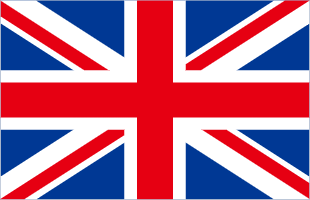The IP68 waterproof rating is given to devices that have an enclosure designed to fend off any dust particles of any size as well as repel moisture, splashes, and even submersion in water for at least 1 meter depth and 30 minutes of duration. The manufacturer’s actual test will determine how much you can go beyond that. The IP68 is the highest IP rating a device can get for protection against solids and liquids. That being said, it does not make the device invulnerable to all types of liquids such as oil or saltwater.

We’re going to delve deeper into the meaning of this IP rating and what you should expect from an IP68-rated device. Let’s dive right into it.
IP68 Waterproof Rating: The Definition
The IP ratings are standardized by the International Electrotechnical Commission or the IEC. The first number is a 0-6 scale for protection against solids (mainly dust) and the second number is a 0-8 scale for protection against moisture. At 1-4, the protection is fairly low, such as dust particles of a particular size and above can’t get inside the enclosure, and the device is protected against splashes and light rain, but can’t be submerged in water.
The highest rating is IP68. This means that the enclosure is fully protected against all types of dust and solids as well as moisture. The testing is done in freshwater. As such, the water resistance should be taken as more of a guide or an upper limit in the case of an emergency, and not a basic feature that you should test.
• First Digit (6): Indicates the level of protection against solid objects and dust. In the case of IP68, it means the device is dust-tight, providing the highest level of protection against solid particles.
• Second Digit (8): Specifies the degree of protection against water. An IP68 rating means the device is protected against the effects of continuous immersion in water beyond 1 meter. The exact depth and duration are usually specified by the manufacturer.
In terms of waterproofing, the IEC maintains that the enclosure should be protected against damage if submerged in freshwater of at least 1 meter depth for at least 30 minutes. The enclosures could be even more robust and withstand deeper submersion and/or for longer. The exact depth and duration numbers are given by the manufacturer on the product description page.
IP68 waterproofing is often found in devices like smartphones, smartwatches, fitness trackers, and other consumer electronics. It means that the device is designed to withstand water exposure in everyday scenarios, such as accidental spills, rain, or even brief submersion in water.
For example, an IP68-rated device will not be damaged if you have to take it out in the rain and make a call. It will also be able to withstand accidental drops in shallow water or if you spill a glass of water on the device. Note that other types of liquids and salt water are a different story altogether. The IP rating system does not take all that stuff into account as the densities and the chemical composition differ a lot from liquid to liquid.
Things to Keep in Mind
While IP68 suggests a high level of protection, misuse or exceeding the specified depth and duration may compromise the device's waterproofing. It’s always best to take the IP rating of a product as more of a guideline to what it can withstand – and not something that’s a guarantee.
Needless to mention, an IP68 rating doesn’t imply absolute immunity to water damage in all situations. A variety of factors, such as water pressure, temperature, and the condition or age of the device as well, can affect the water resistance level of the enclosure.

And as a device undergoes regular wear and tear, the seals can get damaged and over time, reduce its water resistance. This is common in smartphones and consumer-grade electronics.
The protections of an IP68-rated enclosure in a product that’s built for rugged use, durability, and the outdoors in general, are certainly more dependable. For example, our flagship rugged phones come with the same IP rating as a typical smartphone, but the additional protections and durability features make them inherently stronger and more protected against water and dust damage.
To summarize it all, IP68 waterproofing signifies a high level of water resistance and complete dust resistance. Any IP68 device is suitable for use in environments where you expect some level of exposure to water. But that’s more of a guideline than a guarantee – you should always adhere to the manufacturer’s guidelines and exercise caution. This is important for the longevity of the device’s water-resistance capabilities.
Also, make sure that you note the exact depth and duration advertised by the manufacturer when it comes to water submersion. That’s the IP68 waterproof rating’s upper limit that you should never go beyond.

















